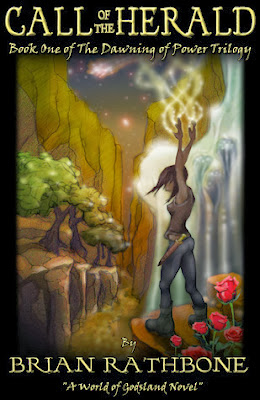Publisher: CreateSpace
Format Read: Paperback
Source: the author in exchange for an honest review
Release Date: December 27, 2012 (originally released 2005)
Buying Links: Amazon Barnes & Noble IndieBound
Blurb from goodreads:
On a quiet,
moonlit beach, a baby green sea turtle stirs from a dream of home.
Slowly, slowly, with a tap, crick, crack, the baby turtle embarks upon a
mysterious nighttime journey. Gentle, tender verse and enchanting
illustrations carry this tranquil tale from sand to sea.
Stephanie's first book, I'll Follow the Moon comforts children with its soothing tone and melodic repetition.
Bea's Thoughts:
"I'll Follow the Moon" is a sweet story about a newborn turtle's hatching and journey to rejoin his mother in the ocean. Told in rhyme and using wonderful descriptive language, each page ends with the phrase "I'm coming, Mama, I'll see you soon, I know just how...I'll follow the Moon" It's a tranquil story, calm and soothing but with a message of hope. The young turtle pushes on to find his mother and doesn't stop until he succeeds.
The artwork is calming in pastel watercolors with simple backgrounds. The pictures are light on detail, I would have liked a bit more, but the young turtle itself is nicely detailed and, I think, quite adorable.
I saw a few reviews that mentioned the book wasn't scientifically accurate. That may be true, I don't know, but the book isn't written or marketed as a science book so I don't see that's a problem. The back of the book has a page with suggested activities and lesson plans to extend if the child enjoys the book. If a child is interested in learning more, their parent, caregiver or teacher could do some research.There is a
facebook page for the book and green sea turtles that may be of interest.
"I'll Follow The Moon" is an enjoyable read for older toddlers and young preschoolers. I see myself sharing this at my school.
************************************************************************
Stephanie is touring the next few weeks to get the word out about
Earth Day on April 22nd. You can follow the tour here:
http://www.candacesbookblog.com/2013/02/earth-day-blog-tour-announcement-and.html
She's also doing two giveaways, you can enter below using the rafflecopter widgets. Please read the directions carefully.
a Rafflecopter giveaway
a Rafflecopter giveaway
************************************************************************
I almost forgot! I was supposed to talk about what we do at my school to help the earth. For the most, we recycle. Being a preschool and a child care center, recycling takes two forms: 1) collecting items with the recycle symbol and turning them into a recycle center, and 2) saving and collecting items everyday items to be used in the classroom or in art or science activities. Actually, that latter is reusing not recycling.
Each classroom has a mesh bag for collecting recyclables and parents take turns bringing it to their local recycle center. We save anything that has a recycle symbol - yogurt containers from children's lunches, empty cracker boxes, etc. We also collect plastic shopping bags which have many uses in the room. I almost hate to see them go and be replaced by fabric bags, those are much less useful for our purposes. Additionally, our office has boxes for recycling paper and we save and turn in our printer's ink cartridges. The break room has a container for drink bottles that can be turned in for bottle deposits.
As for items that we save and use, well, that's a nearly infinite list of items: old keys, coffee cans, stationary, pretty boxes and ordinary cardboard boxes, fabric, pipe cleaners, magazines, calendars, golf balls, buttons, etc. We even have old cell phones, with the batteries removed. The kids love playing with them and also with old landlines. They solemnly push buttons and carry on conversations. Much of the clothing in our dress up closet is cast-off kids and adult clothing as well as the occasional donated dress up. In fact, many families recycle toys, books, games, clothes, etc. by donating them to the center. We've even had furniture donated, saving us the cost of buying new furniture for the classroom.
Additionally, we plant. Every playground has a garden and we garden organically. Most years, the gardens include vegetables or herbs and the classes, from infants on up to eight year olds, get to eat the results of their labors. Often, we'll make bird feeders in the winter using pine cones and all of the playgrounds have a year round bird feeder that the birds and squirrels enjoy.There's also a compost bin for food scraps.
Is there more we could do? Undoubtedly. We have some constraints that come from state regulations about what we are allowed to do and have. Other limitations come from the usual culprits of time, money,
space, and initiative. But we'll continue to explore and see what we can do, and continue educating our students about the earth and caring for it.
What do you do? Is there one small change you could make today that would help?
























.jpg)


.jpg)